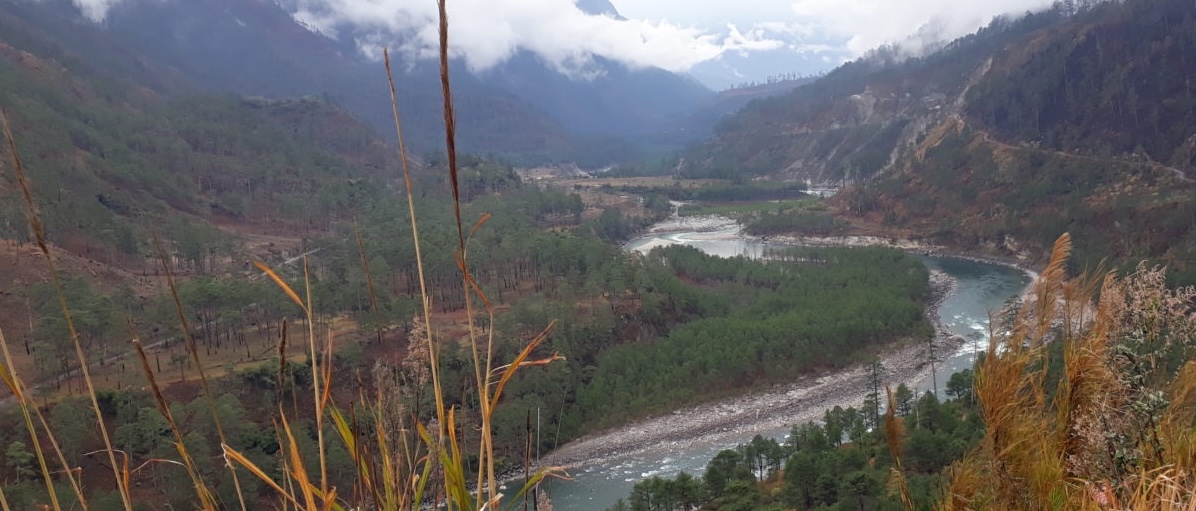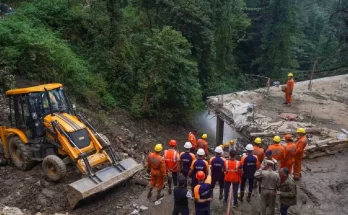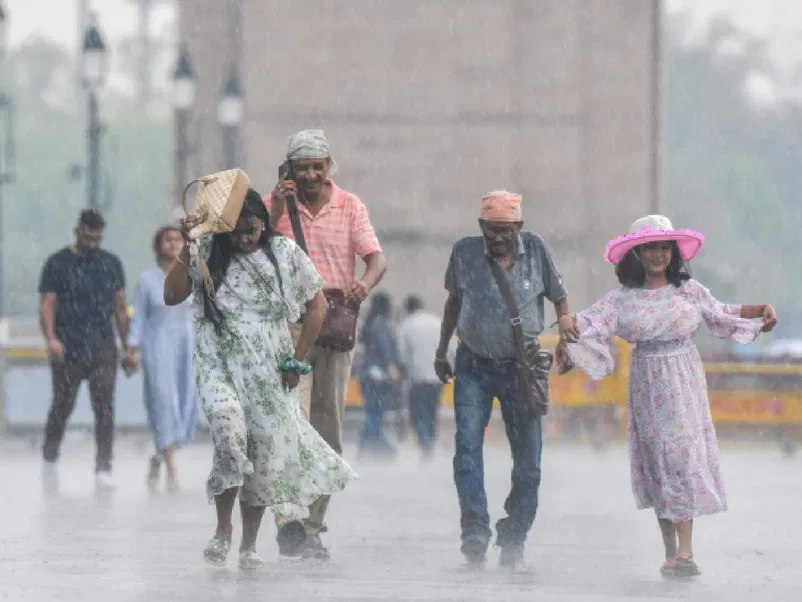
People protecting themselves from rain walk on a road at India Gate, in New Delhi. (Photo credit: PTI)
Over a dozen states have received deficient rainfall this year. More than two dozen large reservoirs have less than 50% storage and rice sowing has happened in about 26% less area compared to last year as on June end. All hopes are now pinned on July’s “normal to above normal rainfall” prediction by the India Meteorological Department (IMD) chief weatherman on June 30.
According to IMD data, the country as a whole received 148.6 mm rainfall between June 1 and 30, which showed a -10% departure compared to the long period average rainfall of 165.3 mm. That is termed ‘normal’ rainfall in IMD parlance.
Kerala received large deficient rainfall (between -60 to -99% of normal) and 12 states and UTs – Lakshadweep Islands, Karnataka, Andhra Pradesh, Telangana, Maharashtra, Goa, Odisha, Jharkhand, Bihar, Arunachal Pradesh, Manipur, and Mizoram – received deficient rainfall (between -20 to -59%). Meanwhile, due to cyclone Biparjoy, states in west and northwest India received excess rainfall.
IMD Director General Dr Mrutyunjay Mohapatra said, “The monthly rainfall averaged over the country as a whole during July 2023 is most likely to be normal (94-106%) and most probably within positive side of the normal.”
This means the July rainfall is likely to be more than 100% of the long period average (1971-2020) rainfall of 280.4 mm.
The rainfall pattern has had an impact on the agriculture sowing as well as reservoir positions across India. While 33 of the 146 reservoirs monitored by the Central Water Commission had storage of 50% or less of average of last 10 years, the main kharif season crop of paddy witnessed about 25% less sowing as many of the rice growing states received deficit rainfall.
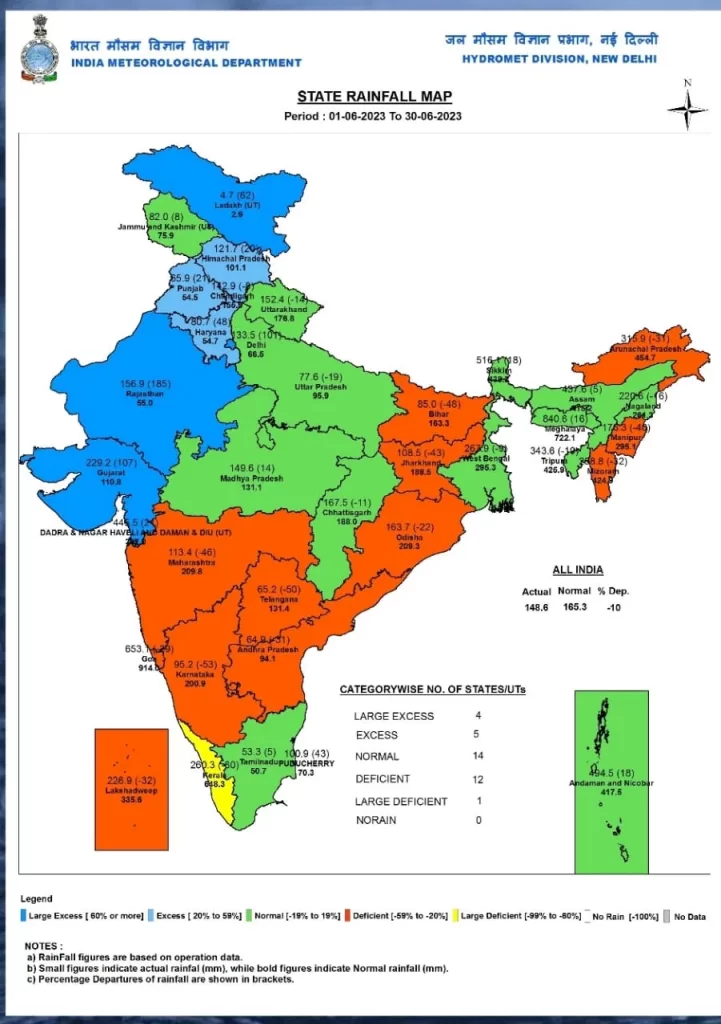
Sowing in June: Decrease in paddy, increase in bajra
Data from the Department of Agriculture & Farmers’ Welfare for the progress of area coverage under kharif crops as on June 30 showed the total area sown as 203.18 lakh hectare this year as against 202.33 lakh hectare last year. However, the area sown for rice is 26.36% lesser compared to previous year, at 26.55 lakh hectare this year as against 36.05 lakh hectare last year.
The data also showed that the area sown for pulses has slightly increased to 18.15 lakh hectare this year as against 18.51 lakh hectare last year. However, but arhar / tuar daal has seen just 1.11 lakh hectare sowing this year against 5.40 lakh hectare last year.
Advising “not to hit panic button as yet,” former Agriculture Commissioner, Ministry of Agriculture, Dr JS Sandhu explained: “In general for all (kharif) crops, sowing in normal years happens till July 15. When we talk of rice, paddy sowing and trans-plantation happens till mid-August in many areas depending upon the rainfall. Especially in eastern Uttar Pradesh and Bihar, most years are a chronic problem, only some years see normal rainfall.”
A major reason for that region (eastern Uttar Pradesh and Bihar) to delay sowing is that the area is prone to frequent and multiple floods, Sandhu said, adding, “So, farmers are very clear in their concern over the years. They let one flood get over and then do the sowing late.”
Sandhu said that one “need not press the panic button yet” and suggested that can happen only if sowing is less than normal in Punjab, Haryana, and Uttar Pradesh. Allaying fears about rainfall’s large deficit in states such as Kerala, he added, “Kerala is a small state vis-a-vis rice output. It does not matter much in the larger scheme of things. Plus, Kerala also gets some rainfall along with Tamil Nadu during the northeast monsoon (starts from October).”
The consistent efforts by government to push for millets and hardy coarse cereals has shown an impact this year as the area sown for millets – termed as Shri Anna-cum-Coarse Cereals – has increased to 36.23 lakh hectare against 22.41 lakh hectare last year. The year 2023 is the International Year of Millets. The massive jump was possible due to increase in bajra sowing – 25.67 lakh hectare this year compared to 9.25 lakh hectare last year.
Reservoirs show mixed status
Agriculture Ministry data also showed that area under oilseeds has increased to 21.55 lakh hectare this year from 18.81 lakh hectare last year. Area for water guzzler sugarcane has increased to 54.40 lakh hectare this year from 52.92 lakh hectare last year.
Central Water Commission (CWC) monitors a total of 146 large reservoirs on a weekly basis. Of these, 10 are in northern region (Punjab, Himachal Pradesh, and Rajasthan); 21 in eastern region (Jharkhand, Odisha, West Bengal, Tripura, Nagaland, and Bihar); 49 in western region (Gujarat and Maharashtra); 26 in central region (Uttarakhand, Uttar Pradesh, Madhya Pradesh, and Chhattisgarh) and as many as 40 in southern region (Andhra Pradesh, Telangana, Tamil Nadu, Karnataka, and Kerala).
The storage is important as large scores of areas across the country are dependent on irrigation provided by canal network of these reservoirs.
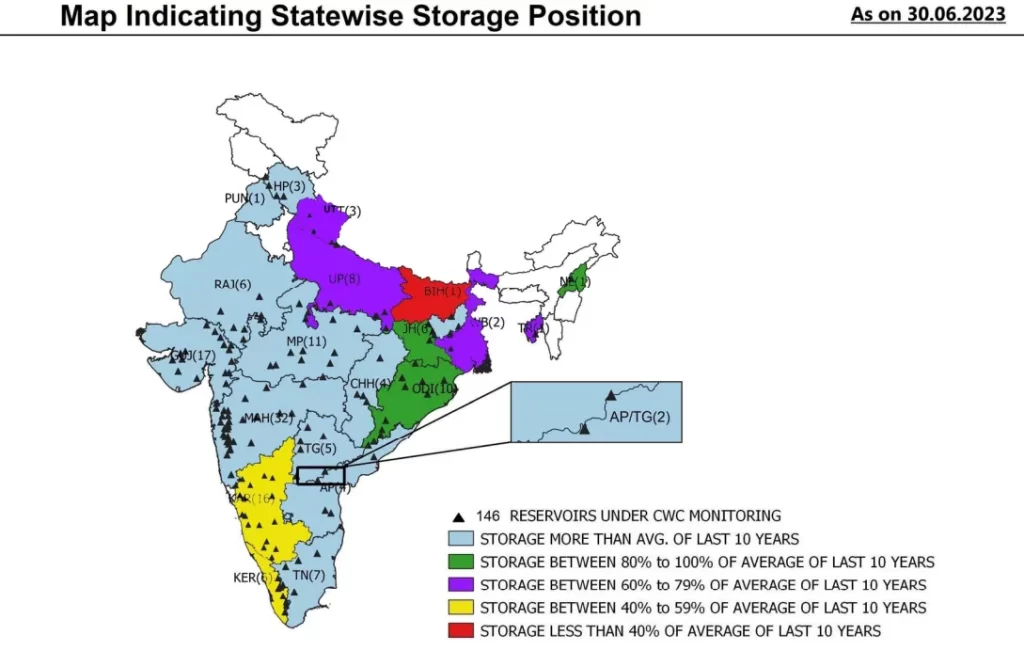
CWC data as on June 29 showed 33 reservoirs across 10 states had storage 50% or less of the average of last 10 years’ storage. CWC’s bulletin on June 30 shows Bihar’s reservoirs have storage less than 40% of last 10 years’ average; reservoirs from Kerala and Karnataka show 40-59% of last 10 years’ average. At least one reservoir each in Karnataka, Maharashtra, Odisha, Tamil Nadu, and Uttar Pradesh have zero live storage capacity with some dead storage.
“Out of these reservoirs, 18 reservoirs are of hydro-electric projects having total live storage capacity of 34.960 BCM (billion cubic metres). The total live storage capacity of 146 reservoirs is 178.185 BCM which is about 69.11% of the live storage capacity of 257.812 BCM in the country,” said an official from the CWC.
Putting the CWC data in context, especially for the impact on hydropower generation, Himanshu Thakkar of South Asia Network for Dams, River and People (SANDRP) said: “North India has larger installed capacity of hydropower. Cyclone Biparjoy and western disturbances have ensured positive reservoir status as of now. But it is the July and August rainfall that will have real impact on hydropower generation in North India.”
“But the main impact would be felt – both on agriculture and hydropower generation – in South India and Maharashtra,” cautioned Thakkar.
For July, the IMD has indicated that the rainfall will be normal to above normal for most parts of central India and adjoining south peninsular and east India apart from some areas of northeast and northwest India. Meanwhile, it will be below normal over many parts of northwest, northeest and southeast peninsular India.
“In north India, if there is some deficit (in July), some of it may be compensated because of the high snow melt as we had western disturbances late in June also,” Thakkar added.
(This story first appeared on news9live.com on Jun 30, 2023 and can be read here.)
